
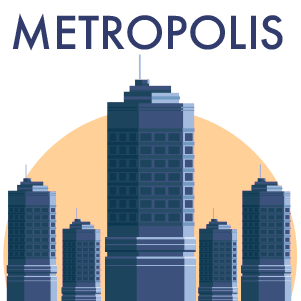
Saturday, February 13, 2016, on the South Bank of the River Thames in London, was like any normal winter’s morning. Battling the chilly wind blowing off the river, people eagerly lined up for the London Eye, the huge observation wheel that stands slightly down and across the river from the Houses of Parliament. Street entertainers stood like statues, awaiting the chance to surprise unsuspecting children. For some families, the opportunity to snap a selfie with the Palace of Westminster or St Paul’s Cathedral in the background was too much to resist. And outside City Hall, in the shadow of Tower Bridge, a protest was kicking up.
This specific demonstration was organized by the local group Space Probe Alpha. While small in number, Space Probe Alpha reflects a growing global concern about the increasingly restricted access to public spaces in cities globally. Writer Will Self railed against “piss-pots” (Public Space Protection Orders, which limit certain activities in public spaces), while London Assembly Member Jenny Jones told the crowd she had been admonished for taking a picture of City Hall, the very building where she works to represent Londoners. Voices opposing the ongoing narrowed access to public spaces–and particularly to the River Thames–rang strong.
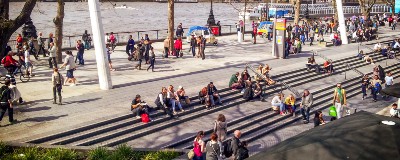
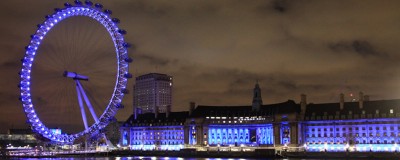
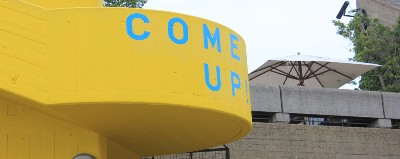
Londoners have always had a close affinity with their river. It is as much a part of their identity as Cockney Rhyming Slang or the Tube Map. The decline of the Thames as a major global port, and the subsequent attractiveness of riverside locations for development, has reignited historic battles between maintaining private access rights set under English Common Law on land ownership and associated riverside rights, and the public’s desire to access “its river.”
The Coin Street Community Builders fought one such battle on the public’s behalf. The social enterprise, born from a protest movement in 1977, opened up access to the river by creating a riverside park between the National Theatre and Sea Containers House. The Thames Path and its lack of consistency (particularly east of Tower Bridge), along with the controversial Garden Bridge, are two other battles playing out on the famous river’s banks.
Such local conflicts are manifestations of larger changes in how we view public spaces in our cities. Recent years have seen an increasing resistance to heavily managed social spaces. The traditional neoliberal model to public space favors order, contrary to the wider movement’s values. This has manifested itself in more stringent controls of “undesirable activities,” with diversity and interactions controlled.
Public access to such spaces becomes permissive based upon conditions more stringent than the social contract, with behavior controlled by surveillance, private security, and uniform principles in the design of the public space. The Thames contains many examples of such permissive access. In fact, much of the space thought of as accessible to the public is permissive by law. Access is at the behest of the landowner, secured through planning agreements negotiated with public authorities.
But ownership is just one part of the issue. There is a much wider debate about the purpose of public spaces in our cities. Public spaces, by their nature, are places of conflict. People with different backgrounds, different perspectives, different purposes for using the spaces mingle in what is the ultimate form of urban democracy. The use of space changes over time, reflecting the changing circumstances of the city around it. No wonder public spaces in our cities are the focus of commerce, social interaction, and–as shown across the world–revolution.
A successful public space enables tolerance in its design and function, and is a “stylized template” for democracy and social interactions within urban areas. The Undercroft under Queen Elizabeth Hall, part of a famous concert venue complex on the South Bank of the river, has morphed into the number one destination for skateboarders in London. Passersby on the nearby path even stop and admire the boarders’ moves–the ollies, Butter Flips, and the occasional Daffy. A conflict in the desire for use of the space, but accepted.

As Cat Matson touched upon elsewhere, while cities such as London aspire to “become smarter,” technology is becoming increasingly infused into the cityscape. Transport for London, the government body which runs public transport and infrastructure in the city, has even set up its own Future Streets Incubator. I have lost count of the number of cities looking to enable delivery by drone. Such technology is introducing a new kind of battlefront for public space.
The use of technology platforms to coordinate social action in urban spaces, as happened during the Arab Spring, has only recently become an area of academic focus. Early studies reveal, however, that as conflicts and social change manifest themselves today–including by way of technology platforms–there is an increasing opportunity to organize and move the conversations and want for change into public spaces.
Early foresight and futures studies support the notion that as social technology becomes increasingly ubiquitous, our physical and digital lives are becoming one. But technology is not just about conflict. A short stroll down the South Bank showcases the role it plays in how people experience the space: calling friends, taking selfies, navigating to the nearest Tube station, even seeding plans for a protest movement. Technology augments the experience of being in public and using the space, for all. The value of technology is not to add another gimmick into an already busy environment, but to add to our experience of it and bring the public space into our wider social networks.
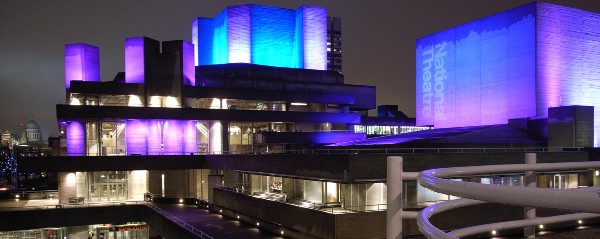
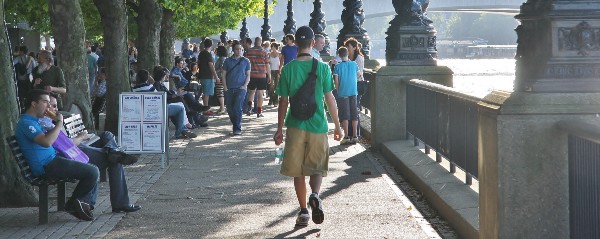
This is where we return to that protest outside City Hall in February, one set up by a Facebook Group, coordinated via email and messaging apps, but fundamentally delivered in the real world. Granted, the protest was small and unlikely to change things by itself. But without an initial presence, change rarely happens.
A similar story is unfolding in cities across the world, from the waterfront of Belgrade to the sidewalks of Los Angeles. Even the United Nations recently debated the role of public spaces in urban life and democracy. Regardless of different cultures and norms, there is a common worldwide message–public spaces in cities are crucibles of democracy, rife with conflicts inherent to urban life, and that is to be valued.
The next time you are in a public space–whether it be the South Bank of the Thames or your local park–just take a moment and observe. Chances are you’ll find that technology is also becoming integral to how we wish to experience public spaces. Long may it be that way.


How We Get To Next was a magazine that explored the future of science, technology, and culture from 2014 to 2019. This article is part of our Metropolis section, on the way cities influence new ideas–and how new ideas change city life. Click the logo to read more.
